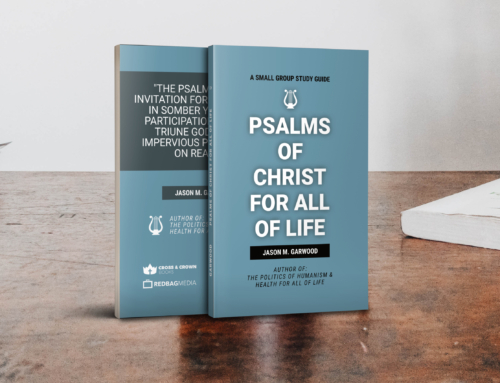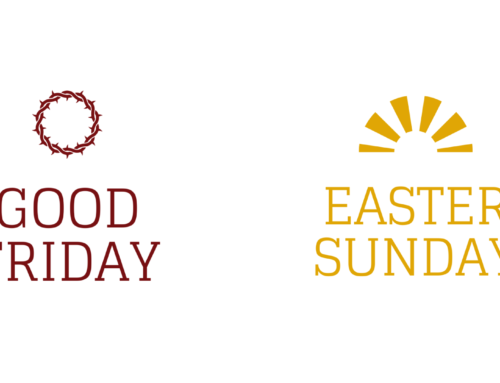You can listen to this in podcast form over at Reconstructionist Radio.
————
One of the most revolutionary ideas for me was understanding God’s covenants. What I don’t mean by that is doing fun little Sunday School studies on the Noahic Covenant, Abrahamic Covenant, Mosaic Covenant, Davidic Covenant and New Covenant. All of those, like a jigsaw puzzle, fit together to form what Reformed theologians have taught for centuries, the covenant of grace. With Adam and Eve in Eden, we have the covenant of works, or as it is sometimes called, the covenant of creation. Everything after Genesis 3, and leading up to the New Covenant sealed by the blood of our Lord, is the covenant of grace.
That these concepts have been established for quite some time goes without saying. Reformed theology has done a great job in helping us think through these two major covenants and how they fit together. The New Covenant is really covenant renewal, as this is made clear in Jeremiah 31; of course some things changed in the covenant, most notably, of course, being the abolishing of the sacrificial system for Christ is our passover lamb. Certain expressions of covenant faithfulness were altered, but the covenant principle remains for they all fit together.
What hasn’t been developed by Reformed theologians, generally speaking, however, has been the application of covenant theology. That all changed in 1985. As Dr. Gary North has pointed out in many of his books, Rev. Ray Sutton discovered the 5-point covenant model after exploring biblical symbols and working with some of Dr. Meredith Kline’s material on suzerain treaties in the Ancient Near East. Sutton took the application of covenant theology to a new level, by giving us a “grid,” or “model” to look at when not only coming to Scripture, but also when we look at the world around us in light of the Scriptures, as well.
After taking great care in exploring this model, it became apparent very quickly that these 5 elements to God’s covenant relationship to the world are all over the Bible. Even the Pentateuch itself is modeled after it. The book of Deuteronomy is patterned after it as well. In fact, there’s not a passage of Scripture that can’t be traced back to this model! The reason for this, of course, is because the Bible itself is a covenantal document.
I now see why Dr. North was thrilled to implement this into all his life’s work because I am convinced that a thorough understanding of this model can literally change your life. I read Sutton’s book a couple of years ago and I can say without a doubt that outside of Scripture itself, that book has had the most impact on me. It literally changed my life, and I’m not exaggerating. One of the reasons that this changed me was because it finally gave my postmillennial doctrine, my presuppositional tenacity, some teeth. It finally gave me the glasses I needed to refute any idea that goes against the gospel. It gave me a little more expresso in my already exciting dominion-committed life. For two years since I read that book I’ve been testing it out, both in the local church, and in my own family’s life. I’ll share some of those finding in a little bit.
Before we move on, I want to make sure we lay out the ground work. Defining our terms is one of the most important things because I need to make sure you know what I mean when I say what I say. When I say, “Covenant,” I’m talking about God’s binding self-revelation of himself. A covenant, biblically speaking, is simply an agreement sealed by oath between two parties to fulfill some action or obligation. To say that “everything is covenantal” is to say that everything stems from God. “In him we move and have our being.”
All things that exist do so because God has said they should exist. Nothing exists outside of God’s will, which is to say, God’s covenantal nature and action in history is only due to the fact that He decided to do it that way. Covenant simply means that we are bound to God. Every person, institution, and creature is covenantally tied to God for God is the transcendent Creator. For God to be a covenantal God, he must be both the creator and sustainer: there is relationship, for He made us, and commitment, He has a purpose. No man or institution is outside of God’s covenantal obligations. Which means there are only two types of people: covenant breakers, and covenant keepers. Seed of the serpent, and seed of the woman.
Having said all that, covenant works itself out in these 5 ways; these are the blueprints for the covenantal house. You can remember this quite easily if you simply remember the Greek word for God, “theos.” The points to this model as Sutton developed them are: 1) Transcendence. 2) Hierarchy. 3) Ethics. 4) Oaths. 5) Sanctions. = T.H.E.O.S.
Let me describe each one.
1) Transcendence. This refers to ultimate sovereignty. God is the only ultimate, transcendent sovereign. He created and sustains all things. All things owe their origin and purpose in the sovereignty of God. When God gave his law-treaty to His son, Israel, when he brought them out of Egypt, he established his sovereignty as the conquering warrior King who is the only Sovereign. Everyone and everything is derived from this first point of the covenant. Who’s in charge? God.
2) Hierarchy. This is God’s hierarchical system of law enforcement. There is an established order underneath point 1 of the covenantal model. Man sits underneath God’s authority. Man is God’s covenantal man. What needs to be clear with regard to this point of the covenant is that man is God’s agent for dominion in the world and only when he is restored in Christ can he actually achieve it. Therefore, it is appropriate to say that Christ is the one who has been established as the hierarchical leader in this part of the covenant. Which is to say, Jesus Christ has been established as King of kings and Lord of lords, who, according to Matthew 28, has all authority in heaven and on the earth, and this kingdom is a mediatorial kingdom that will be turned over to the Father in accordance with 1 Corinthians 15 after King Jesus destroys His enemies. God is the sovereign, that’s point 1, Jesus is King, and we are in Him; that’s point two.
3) Ethics. This is the law of the Kingdom of God. Laws are the terms and conditions of the covenant. Law establishes what the Suzerain expects of the vassals. When God gave his covenant law-word, he was establishing His peace treaty. Law is a peace treaty because law sets the conditions necessary for man to be in relationship with God. It doesn’t save a man, for only the gospel can do so. But the law and gospel work together; they are friends, not enemies. The opposite of law is lawlessness, not grace. We should also note that the law of God and only the law of God is the true law in the universe. The self-proclaimed despots of any kingdom who subjugate men under their supposed “law” are actually subjugating them under lawlessness. Only God’s law reigns supreme in God’s covenant world.
4) Oath. These are God’s covenant sanctions. An oath ratifies the treaty. It calls forth God’s judgment—which can be either blessings for obedience, or cursing for violations. Covenant loyalty is the key in this point. In Deuteronomy 28-29, for example, God lays out the sanctions against people and nations who will not submit to God’s law treaty. A man who doesn’t want the covenant is not in a position of neutrality, he is a covenant breaker. Only the gospel moves a covenant breaker to a covenant keeper. Only when the Spirit of God writes the law treaty on our hearts can we actually experience blessing. That doesn’t mean, however, that a Christian is free from any of God’s judgments in history. God will judge nations in the end, and he judges nations in the present. All of it depends on covenant faithfulness. Faith without works is dead.
5) Succession. This is the issue of time. This last point of the biblical covenant has everything to do with where this outfit is heading. Where is this relationship with God going? What’s your theology of time? God is the Lord in time and the Lord uses time to establish His Kingdom. Sutton prefers to call it “continuity.” This is an issue of covenant renewal: will there be a confirmation and transfer of inheritance? Who are the true heirs of God’s world? The children of the promise? Or the children of Satan? Will Satan inherit the earth, or will God’s meek children inherit it? This flows out of point 4 because those who will not obey will be disinherited. Covenants can be dissolved. Covenantal death is a real thing. The question is, where is this thing heading? What is the plan for the future? Now, I realize that this is a lot to take in, but bear with me.
One of the important principles in all of this that must go with the concept of covenant is the issue of neutrality. I have gotten into the habit at our church of saying, “Everything is covenantal, nothing is neutral.” All I’m trying to convey in this biblical truth is two things: 1) This is God’s covenantal world (and therefore everything points back to Him), and 2) Everything in God’s covenantal world is either with God or against God. Jesus said in Luke 11:23 that, “Whoever is not with me is against me.” There is no neutral ground anywhere in the space/time continuum.
Remember: a covenant is a treaty ratified by an oath. It’s a binding agreement between two parties which lays out the terms and conditions of the relationship. Covenant is everything in God’s world, it’s literally built within the fabric of creation. Everything is ethically tied to God’s covenant. Now, take those principles and let’s begin to tease it out.
1) Who’s in charge? Who is the transcendent one? Who has the final say about everything? God. God’s in charge. There are no other gods before Him; He is the ultimate and supreme Being.
2) To whom do I report? I’m in God’s world, who do I owe my allegiance to? What has God established underneath His authority? All men are to serve, worship, and rely on God. All institutions that he has established (individuals, families, churches, and the state) are to submit themselves under God’s authority. They are to kiss the Son, lest they perish.
3) What are the rules? What are the ethics of this covenant? Answer: God’s law. Loyalty to God’s law is shown by obedience to God’s law. Jesus said, “If you love me, you will keep my commandments.” God’s law is the only perfect standard and God is the only lawgiver, according to Isaiah 33:22. Anything outside of God’s law is not a legitimate law, it is lawlessness. It is hostile to God and is outside of the covenant.
4) What happens if I obey or disobey? God will either protect or scatter, depending on if I’m a friend or foe of God. The terms and conditions of the peace treaty are spelled out in the law—if you don’t want them, don’t expect to get a nice birthday present. God’s wrath will be kindled.
5) What about the future of this relationship? Where is it headed? We shall inherit the earth. Do you see how important this is? God’s covenant world is structured a certain way, and when we get this part right, we can begin to see it play out before our lives. Psalm 89:14 says, “Righteousness and justice are the foundation of Your throne.” If you are a listener to Reconstructionist Radio for any amount of time, you’ve probably heard us talk about the “ethical/judicial” aspects of God’s covenant law. Since the foundation of God’s throne is established by righteousness and justice, those two things coincide with ethics and judgment.
When we say that there is an ethical/judicial element to everything in the world, we’re simply saying that everything stems from covenant, and the covenant relationship that God has with His world is built on those two things. The ethical/judicial paradigm is the shorthand way of discerning the world the way God intends.
Man is an ethical being in that he is morally accountable to God. There is also a judicial aspect of this relationship in that man is to exercise dominion in the world, and there are judicial repercussions in how that plays out. Because we are morally accountable to God, we are covenantally accountable as well. This simply means that God brings judicial declarations in history on all peoples and institutions. Nations perish for not bowing to the Son. We don’t have time to get too far into this, so I wanted to at least give you a brief introduction to it.
Now, I want us to think about the covenant model and how we can make it play out in history as we seek to labor for the Kingdom we have received (Hebrews 12:28).
Just a few weeks ago I introduced this model to our church. I’m preached a series called “Politics and Religion” and I wanted to give my congregants the same life-altering stuff I had. What is interesting to me is that many people immediately grabbed ahold of it. I had a lawyer friend of mine say, “Yes, this makes perfect sense. It’s the world I swim in every day.” I was glad to hear this.
The practical aspects of this, however, is really new territory for Christian Reconstructionists. We have a lot to learn and a lot to apply; there is much work to be done. But getting the grid right is where I needed to start. Back to what I said earlier: After reading this book by Sutton, as well as Gary North’s book Unconditional Surrender, I began to see it play out at home.
My oldest son right now is learning all about the 4 spheres of government in God’s world, so he’s able to apply much of this already while listening to my sermons. At any rate, one of the things I want to teach my children is how our relationship with God plays out. Too many parents think that their only task is to make sure their children ‘get saved.’ “As long as they survive public school education and get saved, everything will be fine,” these parents think. What they don’t realize is that they aren’t giving their children the grid through which they can see, discern, and apply the Kingdom ethic of God. Which means that they may be able to answer a few catechism questions, but they don’t have a clue how to spot a phony philosophy.
Because of this grid and understanding, I have been able to take my presuppositional apologetics to the next level because I can now spot a counterfeit. I was proud of my son when he told me, by drawing his own conclusions, how ungodly the tax system was because, in his words, “It takes money from others that they worked for.” Exactly!
Getting the covenantal paradigm down and teaching to our children can be the best thing we can do. Why? It gives them the lens through which to see the Word and apply the Word. One more example will suffice.
Satan isn’t creative, nor is he covenantal. Only God is both. Which means he can only mimic what God does. This is why he had to question the authority of God in the Garden with Adam and Eve. He couldn’t claim to be the Transcendent, because he’s not, so he had to make Adam and Eve think that they could be. Satan has a parody model, and so does Planned Parenthood.
The bait and switch is the same issue from the Garden: instead of being underneath the Lordship of Christ and Sovereignty of God, man plays the part of the Sovereign. Which means he can enact arbitrary hierarchies and arbitrary laws. Which means that there are sanctions for disobeying the State and they are as arbitrary as the rules are. The problem for Planned Parenthood, for example, is that they have no theology of time. Proverbs 8 says that “those who hate [God] love death.”
Satan’s parody has no covenantal continuity for the future, it only leads to death. Planned Parenthood can’t give you a covenantal future. Only God in Christ can. Perhaps next time we can explore this further.
Thanks for reading. Soli Deo Gloria.






Leave A Comment